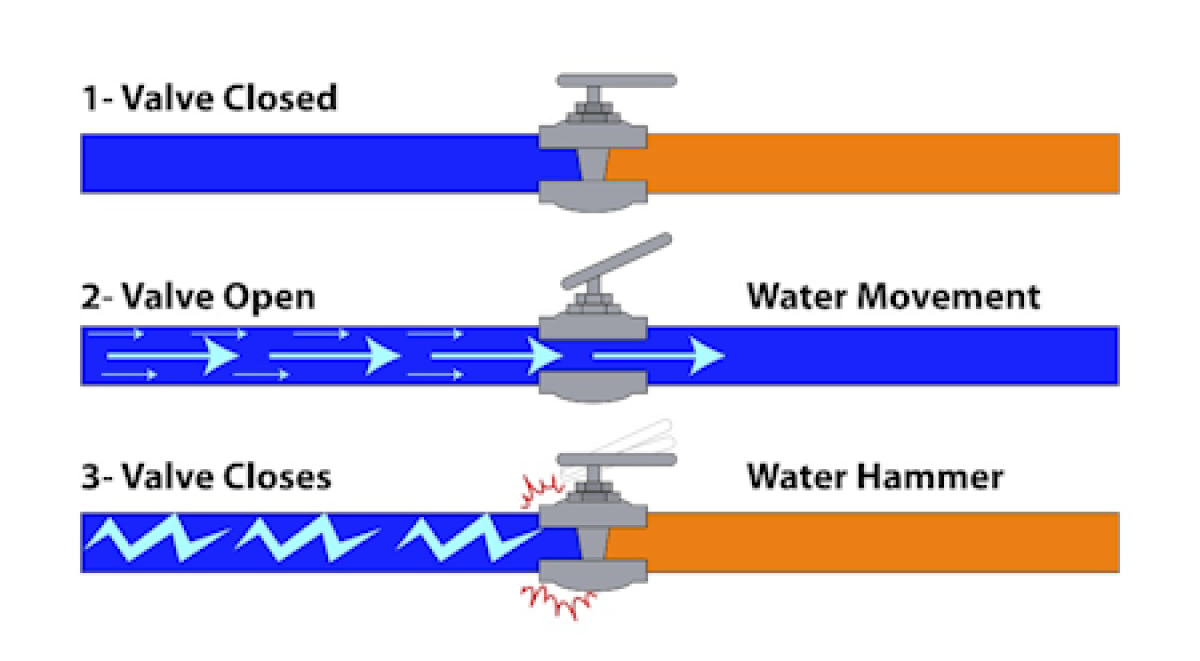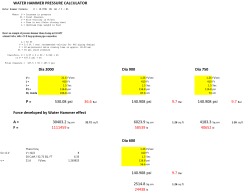Water Hammer Pressure Calculator

Description
Water hammer is a fluid mechanics phenomenon that occurs in piping systems when the flow of liquid is suddenly stopped or changed direction. This calculation focuses on predicting the pressure surge that results from this sudden flow change.
The fundamental principle involves the conversion of kinetic energy to pressure energy. When a valve closes quickly, the flowing water's momentum gets converted into a pressure wave that travels back through the pipe. This pressure wave can significantly exceed the normal operating pressure and potentially damage the piping system.
The formula P = (0.070)(V)(L)/t + P1 captures this relationship where:
- The pressure increase depends on the flow velocity (V)
- The length of pipe (L) affects how much water mass is being stopped
- The closing time (t) is critical - faster valve closure creates higher pressure spikes
- The result adds to the existing inlet pressure (P1)
The calculation also extends to show how pipe diameter affects the forces developed by water hammer, as larger diameter pipes contain more water mass that must be stopped, potentially creating greater forces on the piping system.
This is essentially an application of conservation of momentum and energy principles in fluid mechanics, where the momentum of flowing water must be accounted for when the flow is suddenly changed.
Calculation Preview
Full download access to any calculation is available to users with a paid or awarded subscription (XLC Pro).
Subscriptions are free to contributors to the site, alternatively they can be purchased.
Click here for information on subscriptions.

